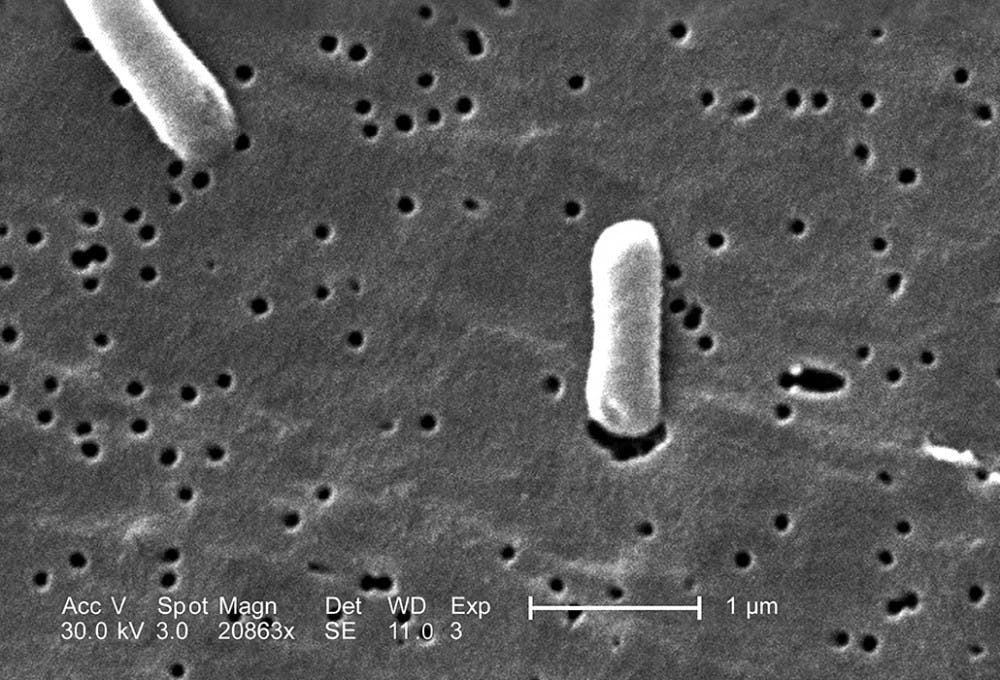A recent University discovery shows Salmonella enterica identifies its location within the body using a substance called ethanolamine, a cell membrane component that provides nutrition to the foodborne pathogen. The bacteria’s location indicates to itself if either processing ethanolamine as food (ethanolamine metabolism) or spreading infection (virulence gene expression) is best suits its survival.
Melissa Kendall, assistant professor of microbiology, immunology and cancer biology, discovered ethanolamine’s influence on E. coli pathogenesis. Kendall’s lab was able to identify a similar role of ethanolamine for Salmonella, by examining the signaling interaction it promotes within the immune system.
Kendall described in an email how the pathogen must compete with gut microbiota for available nutrients. Ethanolamine allows survival for the bacteria, despite the normal flora that vastly outnumber it.
However, once the pathogen enters immune cells, ethanolamine enables Salmonella’s disruption of an immune response aimed at its eradication, according to Kendall. Salmonella manipulates the immune system and ‘hijacks’ immune cells, such as macrophages, to promote its own survival.
“In the gut, Salmonella triggers inflammation, which is important for its growth there,” Kendall said in an email. “However, once it is inside our immune cells, Salmonella is basically housed within a vacuolar compartment in the cytoplasm — this keeps Salmonella protected from our immune system and provides a ride throughout the body.”
Medical School Cell Biology Prof. James Casanova has also been studying the Salmonella bacteria. About a year before the publication of Kendall’s discovery, Casanova published a paper in the same journal identifying Salmonella proteins promoting the activation of a signaling protein that allows for the suppression of autophagy, a method of degradation consisting of self-consumption.
Autophagy allows for cells infected by intracellular pathogens, such as Salmonella, to essentially self-destruct via the digestion of organelles by enzymes derived from the same cell. Phagosomes are compartments located within the cytoplasm of a cell that promote the degradation of infectious microorganisms.
“Normally phagosomes are a hostile environment for bacteria; they are nutrient-poor, acidic and full of antimicrobial molecules,” Casanova said in an email, “[Salmonella bacteria] inject an array of ‘effector’ proteins into the host cell cytoplasm that collectively remodel the phagosome into a non-toxic, non-degradative compartment that instead provides a safe niche for bacterial replication.”
Currently, Kendall is still learning how the bacterium is able to determine its location.
“We hypothesize that Salmonella is able to detect differences in ethanolamine concentrations that are present in the gut versus within our immune cells,” Kendall said. “We know that ethanolamine is abundant in the GI tract, and so it would be a plentiful nutrient. Although ethanolamine is also present within cells, we expect that it is much lower and could not support growth of Salmonella, but really function as a signal.”
Given that ethanolamine sensing is believed to be present in a multitude of different bacterial species, this discovery may translate well beyond the two pathogens already studied by Kendall’s lab. It may provide an understanding of how other pathogens work and, more generally, how our bodies respond to such an invasion.
Kendall views her lab’s discovery as a positive step forward for future treatment against such pathogens.
“Traditional antibiotics are designed to kill bacterial pathogens, and these are losing their efficacy because pathogens are developing resistance,” Kendall said. “If we can inhibit Salmonella’s ability to sense where it is in our bodies, this may be an effective treatment because there would be no selective pressure for Salmonella to evolve resistance — it would just pass through our bodies.”







